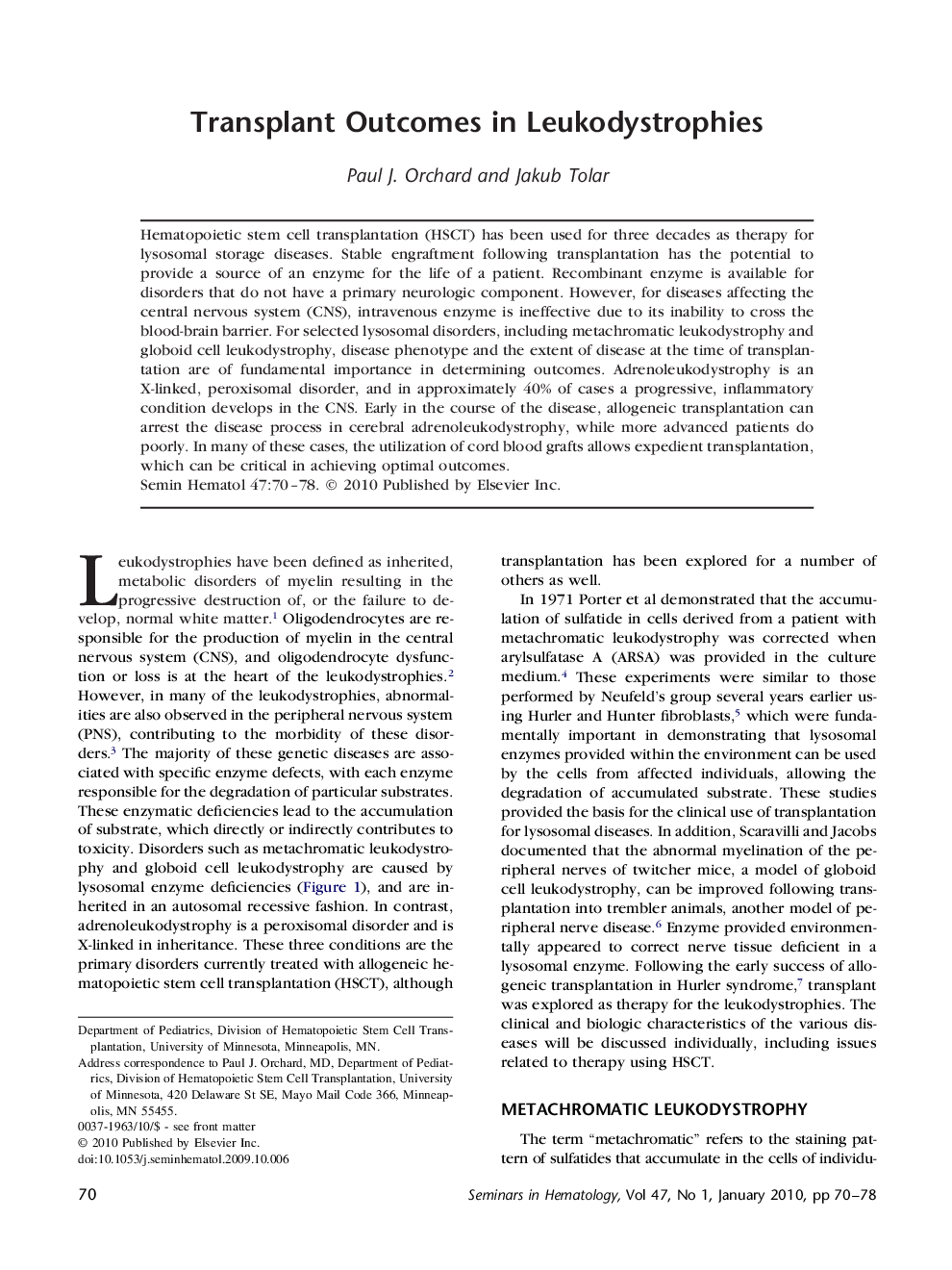| Article ID | Journal | Published Year | Pages | File Type |
|---|---|---|---|---|
| 3333772 | Seminars in Hematology | 2010 | 9 Pages |
Hematopoietic stem cell transplantation (HSCT) has been used for three decades as therapy for lysosomal storage diseases. Stable engraftment following transplantation has the potential to provide a source of an enzyme for the life of a patient. Recombinant enzyme is available for disorders that do not have a primary neurologic component. However, for diseases affecting the central nervous system (CNS), intravenous enzyme is ineffective due to its inability to cross the blood-brain barrier. For selected lysosomal disorders, including metachromatic leukodystrophy and globoid cell leukodystrophy, disease phenotype and the extent of disease at the time of transplantation are of fundamental importance in determining outcomes. Adrenoleukodystrophy is an X-linked, peroxisomal disorder, and in approximately 40% of cases a progressive, inflammatory condition develops in the CNS. Early in the course of the disease, allogeneic transplantation can arrest the disease process in cerebral adrenoleukodystrophy, while more advanced patients do poorly. In many of these cases, the utilization of cord blood grafts allows expedient transplantation, which can be critical in achieving optimal outcomes.
